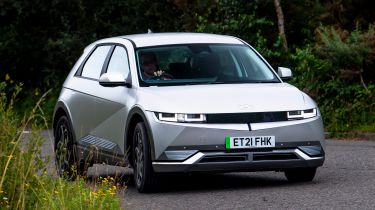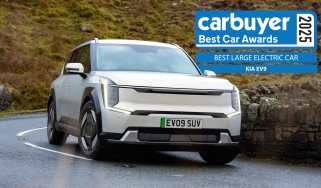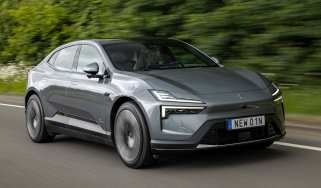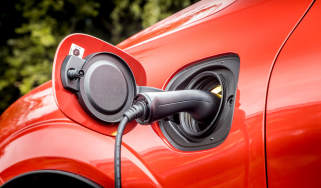Hyundai Ioniq 5 review - Electric motor, drive & performance
Brisk acceleration and assured handling
Like most of the current electric cars, the Ioniq 5 is heavy due to the weight of its batteries. Yet, despite weighing just under two tonnes, this mass is low down between the wheels, so the Ioniq 5 handles well, with little body lean in corners.
This is despite the fact its suspension is fairly soft and while its steering is a bit lacking in feedback, there's plenty of accuracy and a consistent feel. It's a good blend of comfort and fun, but if you're after excitement the Kia EV6 is a sharper choice that’s more rewarding to drive.
The Ioniq 5 feels wide down country lanes, and mid-corner bumps can upset the otherwise smooth feel. Hit a large pothole or camber in the road and the car’s weight becomes very apparent as the dampers take a couple of attempts to get everything back under control. The Toyota bZ4X feels more composed in this regard.
Hyundai Ioniq 5 electric motor
Entry versions of the 5 are fitted with a 168bhp motor driving the rear wheels. This gives it a respectable 0-62mph acceleration time of 8.5 seconds, which is on a par with many petrol and diesel crossovers and matches the 201bhp Volkswagen ID.4.
The next rung up the Ioniq 5 ladder brings a power increase to 228bhp, taking around a second off the acceleration benchmark. This motor feels quick enough for most drivers and can even cause the rear wheels to spin if you press on the accelerator pedal hard enough. Full power is released in Sport mode, which you can select with a quick toggle of the dial on the steering wheel.
Then there's the top version, which adds a second front motor, increasing its combined power to 321bhp with a mighty 605Nm of torque. Performance is significantly better, with 0-62mph taking a hot hatch-rivalling 5.1 seconds. This makes it more powerful than the 295bhp ID.4 GTX and a full second quicker to 62mph from a standing start. You only really notice this extra punch if you really accelerate hard, so in most situations the dual-motor setup doesn't offer a big advantage, but it does provide safe overtaking punch at all times.
The range-topper feels remarkably smooth until you press the accelerator pedal into the floor. The only upset comes from the 20-inch alloy wheels, which can cause the ride to become unsettled on poorly surfaced roads. Luckily, the soft seats also help absorb any sharp impacts transmitted into the car.
Keen drivers will gravitate towards the Hyundai Ioniq 5 N performance model, which follows on from the i20 N, i30 N and Kona N and is the brand’s first electric model to wear the 'N' nameplate. This is one of the best EVs to drive at any price, and we’ve reviewed the Ioniq 5 N in full separately.


















